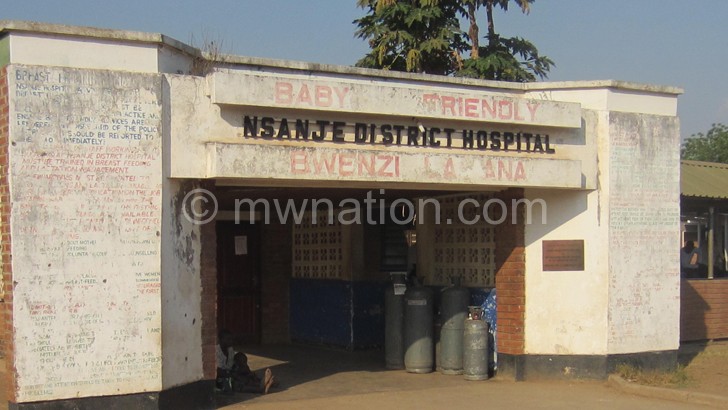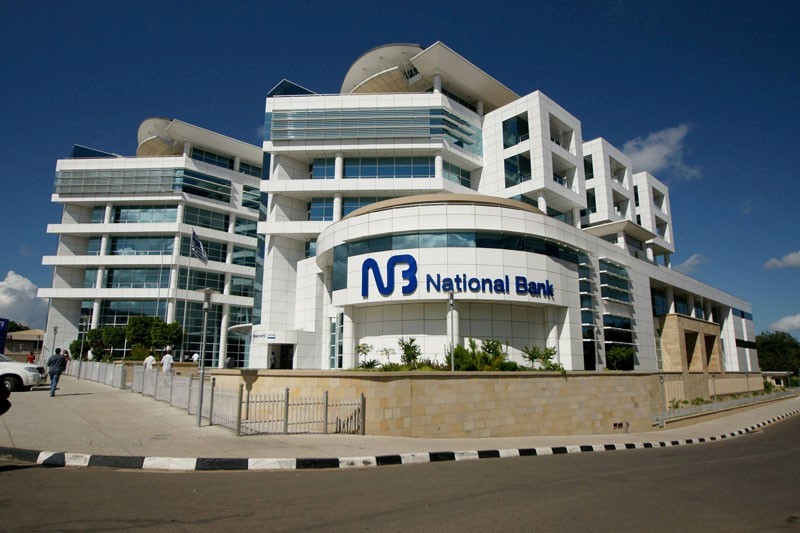When policies fail, people suffer
For 33-year-old Rubbsky Mataya, when health workers at Mchinji District Hospital told him there was no medication to treat the stomach ulcers that had flared up and that he would have to buy pills at a private pharmacy, there was nothing shocking in the request.
“When I come for treatment, sometimes I am asked to buy my own medication. But I usually don’t buy the medicine because I don’t have money,” he says.

Mataya knows the cost of drugs for his ulcers, for asthma which frequently attacks him and he can remember that when he escorted his neighbour who had been bitten by a dog to the hospital in June last year, there was no anti-rabies vaccine.
“I know all the pharmacies between the hospital and where I live in Chimuti Village which is not far from another health centre, Kochilira. But at least the hospital has my medication most of the times I get an asthma or ulcers attack. The health centre rarely does,” he explains, while clutching packets of medicine.
A resident of Mchinji his whole life, Mataya cannot remember a time when there was ever an abundance of drugs and other supplies at the hospital or Kochilira which is 22 kilometres (km) from the district hospital.
As such, he cannot know the difference in terms of availability of drugs before 2015 and now, as far he is concerned things have not changed.

2015 policy change
Mataya does not know that in 2015, the payment for drugs was centralised which in essence meant that the central hospitals and district hospitals would have budgets approved by Parliament but they were not allowed to make payments.
Mchinji District Hospital would know their budget but payments would be made by the Local Government Finance Committee (LGFC) while those of central hospitals by the Ministry of Health headquarters.
Once Parliament approves the health sector budget, the drug budgets for central hospitals and DHOs are given to Central Medical Stores Trust in advance.
The result is that as central hospitals and DHOs are ordering drugs and supplies from Central Medical Stores Trust (CMST), they do not know how much of their budget is left.
A study of Health Sector Efficiency in Malawi published in 2015 and authored by Cindy Carlson, Wiseman Chijere Chirwa and Nick Hall, with support from Diana Cammack, found that this system was not as perfect as it had been envisioned.
The study found that there was no communication from the central level to the cost centre about the cumulative drugs debts incurred against budgets, so cost centres did not know how much of the drug budget had been used.
With his budget of K2.2 billion for 2017/18, Kamuzu Central Hospital director Dr Jonathan Ngoma says patients do not know that this is not all for drugs: The funding is allocated to blood and supplies, gases and drugs and supplies purchased from CMST.
The catchment area for KCH is six million people considering that it caters for all Central Region district referrals while the renal unit and oncology department caters for patients from the North and Central regions.
Being a referral hospital, Ngoma explains, the hospital needs are unique because it has specialty departments such as renal, oncology, ear nose and throat as such treatment is no longer about drugs alone.
To give a picture of the inadequacy of the drug budget, Ngoma says: “Treating diabetes requires urine dip sticks and glucose testing kits not just medicine while for the ophthalmology unit to order implants to treat patients with retinal detachments it requires K275 million.
Instead, the government is having to send patients with retinal detachments abroad, when according to Ngoma, there is an ophthalmologist and equipment to carry out the surgery but no commodities like implants.
“There are so many things that our doctors can do but they are not able to because of resources such as equipment and consumables. The demand for drugs and services remains higher than the supply,” he added.
But the challenges causing unavailability of drugs are not about financial resources alone but a system which the hospital managers claim is not working as the policy makers had envisioned.
“Recently, we had no blood-giving sets at the hospital. It was not our problem. CMST fails to buy certain medical supplies which are very affordable. They are available on the market but due to procurement rigidity, the hospital went without these for a long time. Why should procuring blood-giving sets be a challenge for something that costs K300 each?” Ngoma wonders.
Local supplies
The health sector inefficiency study found that until 2013/14, cost centres like KCH and Mchinji District Hospital could buy from private suppliers those drugs which CMST confirmed were not in stock.
But the result of that was overspending and they incurred arrears that went into billions which the government is struggling to pay back to date.
Mchinji district health officer Dr Juliana Kanyengambeta says much as the decision was justified, the current system is also not working and it is the 18 health facilities with a K269 million budget under her care that suffer.
As of December 2016, Mchinji had a population of 610 781, of which 30 539 were under 12 months and 195 450 were hard to reach.
At the top of the disease burden for Mchinji are malaria, diarrhoeal diseases and pneumonia, mostly affecting children under five years old.
“The budgets that are prepared centrally are not realistic. What the health facilities consume is far more than what is funded. As a DHO we have to prepare for rainy season diseases like cholera and malaria but these will not be supplied at the time that they are needed,” the DHO says.
Kanyengambeta remembers that in 2016/17, the district hospital went into a dispensary exchange with Christian Health Association of Malawi (Cham) facilities in the district because “sometimes CMST does not have certain products”.
Her plea is that the DHO would be buying the drugs and supplies from CMST, but the central government should consider giving a fraction of the budget to the hospitals to purchase relatively cheap commodities.
“The impact of DHOs not being in control of their own budgets is very negative, not just for the health facilities but the patients as well. When CMST does not have some of the commodities but we cannot buy because we have no money, as a manager, I feel helpless,” Kanyengambeta said.
She discloses that for two months this year, the DHO had no blood-giving sets but they could not buy from private traders in the district.
Apart from having no control over the budget to buy needed supplies, the DHOs have no say on the quality of products which reach them.
“We have IV [intravenous] giving sets which leak. Since we cannot send them back, we just use plaster to seal the leaks and life goes on. It is disheartening that I am at work but I do not have the materials to do my work,” she says.
KCH’s Ngoma wonders why there is preaching about decentralisation of health facilities but drug procurement remains centralised.
“Last financial year, the DHOs created arrears but not central hospitals because CMST does not have most of the drugs that we needed. Hospitals are run by high grade individuals capable of handling the drug budget,” he says.
Frustrated and helpless
Ngoma has every reason to be frustrated. In the 2016/17 financial year, KCH spent 103 percent of the drug budget but only 40 percent of what was needed was supplied.
If KCH was to be supplied close to 60 percent, the drug budget alone would go up to K5 billion by Ngoma’s calculations.
The study of Health Sector Efficiency found that there was a disconnect between cost centre planning processes and central budget allocation and spending processes and cost centre managers do not feel they ‘own’ the final approved budget due to the fact that the key aspects of the health budget that could have been linked to planning at the district council level in the case of DHOs and ministry.
“Particularly at districts, there is no budget control at the cost centre level of the largest budget line—drugs—so cost centre managers may be over-or-under-spending and do not track the ‘burn rate’ for drugs,” the report reads in part.
For a mother of five Maria Chiku of Thepeya Village in Traditional Authority Malemia in Nsanje, buying drugs at a pharmacy is not strange.
Although she lives close to Chididi Health Centre, a mission hospital in the area, she prefers Nsanje District Hospital hoping to receive free medication and on many occasions she leaves the facility disappointed.
“At the health centre, we sometimes pay K2 500 for services, only giving birth and children illnesses are free. But compared to the hospital here at the boma, they always have medicines but it is always cheaper to travel here,” she says.
An expectant Grace Kachikuwo from Kamwendo Village, T/A Mbenje in the district concurs that she gets the best care at the hospital even though she has to pay for drugs at a private pharmacy.
“I was once admitted to the hospital for malaria while pregnant, I was given enough drugs. But I came with my husband and children for other conditions we were just given panado and asked to buy some antibiotics at the pharmacy,” she said.
But having monitored the policy for several years, Malawi Health Equity Network (Mhen) is of the view that reversing the policy would require a lot of care and systems strengthening because the abuse of the drug budget in the past was a fact.
“The policy has made contributions towards drug shortages in our public hospitals. The DHOs and central hospital directors do not have control over procurements and what should be stocked,” George Jobe, Mhen executive director says.
He says that buying directly from elsewhere by the public hospitals is not the best solution as this would leave too much room for drug theft and corruption.
“The way to resolve this is for CMST to be adequately funded to stock enough drugs and medical supplies and where necessary allow CMST to buy locally on behalf of hospitals if they have run short of drugs. Malawians should not suffer drug shortages when funds are available,” says Jobe.
In its work, Mhen has received reports, especially from central hospitals, where they order drugs but CMST does not have such drugs in stock. On the other hand, the policy limits public hospitals in terms of where they can buy drugs and medical supplies.
Knowing full well its shortcomings, CMST believes the only way it can perform its functions to the maximum is through recapitalisation so that it has money to buy the drugs and medical supplies in advance.
CMST says the advance quarterly funding model approved in 2015 was to enable them to have enough financial resources to order drugs and supplies as one way of reducing delays in medicines supply to health facilities.
At the annual review meeting in November last year, CMST bemoaned that since its establishment, annual budgets have been much lower than respective quantifications.
While the budget has continued to rise, by 10 percent from 2017 to 2018, the CMST quantification put the requirement at K35 billion this year but they have K17 billion in the kitty.
“CMST finalised the quantification for 2017/2018 financial year and the requirements were estimated at K35 billion against a K18 billion budget allocation. Districts are likely to run out of funds before the end of the financial year,” a presentation to CMST stakeholders made this conclusion.
This coupled with a K12 billion outstanding debt, it is the patients who frequent the country’s public hospitals that will suffer.
Unfortunately, for people like Mataya, nothing much will change anytime soon. n





